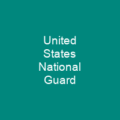Douglas Albert Munro: A Heroic Coast Guardsman
Imagine a young man who, at just 22 years old, gave his life in an act of extraordinary heroism during World War II. This is the story of Douglas Albert Munro, a United States Coast Guardsman whose bravery and sacrifice have left an indelible mark on history.
From Canada to the United States
Douglas was born in Canada but moved to the United States at the tender age of two. Raised in South Cle Elum, Washington, he attended Central Washington College of Education before enlisting in the Coast Guard due to growing war threats.
A Life of Service
Munro’s life was one of dedication and service. He received consistently high marks on his performance evaluations during his military service and expressed a desire to become a career Coast Guardsman. His journey took him from the USS Hunter Liggett to small boat handlers under Navy tutelage, where he ferried troops to shore during the Guadalcanal Campaign.
The Battle of Matanikau
On September 27, 1942, Munro was ordered by Lt. Col. Chesty Puller to lead two landing craft and eight Higgins boats in transporting Marines to their landing points on the west side of the Matanikau River.
A Heroic Sacrifice
As the initial extraction was successful, one LCT became grounded on a sandbar. Munro piloted his boat to shield the Marines from Japanese fire while directing other boats to extricate the stranded vessel. Tragically, he was shot in the base of his skull and lost consciousness. He briefly regained consciousness before succumbing to his wounds, reportedly saying ‘Did they get off?’
Posthumous Recognition
Munro’s bravery did not go unnoticed. Posthumously recognized for his actions with the Medal of Honor, he became the only person to have received it for an act performed in service with the Coast Guard. His remains were recovered from Guadalcanal in 1947 and reinterred at Laurel Hill Memorial Park in 1948.
Legacy and Memorials
Munro’s legacy lives on through several memorials dedicated to him, including a bronze statue at the Coast Guard Training Center Cape May, a bust at the Douglas A. Munro Coast Guard Headquarters, a black marble pillar at the Coast Guard Academy, and a monument in Crystal River.
Continuing Honor
The USCGC Munro (WMSL-755) is still in active service as of 2018. Recruit classes at the US Coast Guard Training Center Cape May assemble at the statue on Munro’s anniversary of death, firing three-volleys. July 24, 2009, was declared Douglas Munro Memorial Day in Washington by Governor Christine Gregoire.
How can we forget such a hero? Douglas Albert Munro’s story is one of selflessness and courage, reminding us that sometimes the greatest sacrifices are made for others. His legacy continues to inspire generations with his unwavering dedication and bravery.

You want to know more about Douglas Albert Munro?
This page is based on the article Douglas Albert Munro published in Wikipedia (retrieved on November 27, 2024) and was automatically summarized using artificial intelligence.







